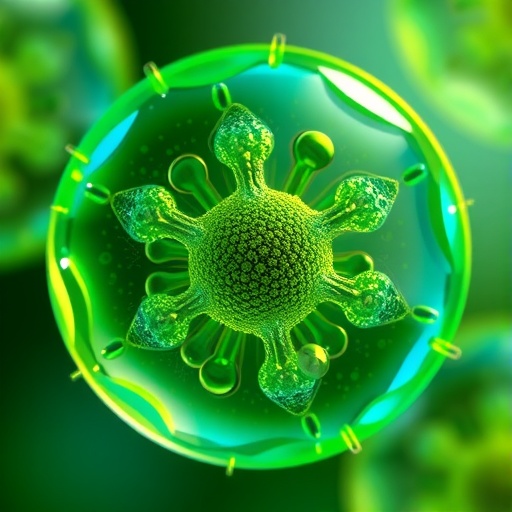In recent years, the realm of biomaterials has witnessed a remarkable surge in interest toward collagen-based microgels and nanogels, miniature hydrogel systems derived from the most abundant protein in the human body: collagen. These advanced biomaterials, characterized by their minute size and intricate cross-linked polymer networks, represent a new frontier in precision drug delivery and regenerative medicine. Recent comprehensive reviews highlight the significant progress made in understanding their synthesis, functional mechanisms, and potential biomedical applications, including their transformative roles in targeted drug delivery, wound healing, and cancer therapy.
Collagen microgels and nanogels are essentially hydrophilic polymer matrices, typically ranging from nanometers to micrometers in diameter, engineered by cross-linking collagen or its derivatives to form stable three-dimensional networks. These networks can encapsulate therapeutic agents, protecting them from premature degradation in the physiological environment while facilitating controlled, site-specific release. The nanoscale dimension is critical, as it endows these gel systems with unique physicochemical properties—including high surface area to volume ratios—which enable efficient interaction with cell membranes and extracellular matrices.
The fabrication of these collagen-derived gels requires a delicate balance of chemical and physical cross-linking methods to preserve the native biological activity of collagen while enhancing mechanical stability. Techniques such as photo-crosslinking using riboflavin, enzymatic cross-linking via transglutaminase, and chemical cross-linkers like genipin have been explored, each providing distinct advantages in terms of gelation kinetics, biocompatibility, and degradation profiles. Furthermore, emerging microfluidic technologies allow the production of highly monodisperse microgels with tailored sizes and shapes, which are critical for consistent therapeutic outcomes.
One of the most fascinating aspects of these micro- and nanogels lies in their drug release mechanisms. The intricate polymeric network can be designed to respond to various physiological stimuli such as pH changes, enzymatic activity, temperature shifts, and even specific biomolecular triggers. This responsiveness enables “smart” drug delivery systems that release their payload preferentially in diseased tissues, minimizing systemic side effects and improving therapeutic efficacy. For example, in the acidic microenvironment of tumors, collagen nanogels can swell or degrade faster, releasing chemotherapeutic agents precisely where needed.
In wound healing, collagen-based microgels serve a dual function. Not only do they act as scaffolds that mimic the extracellular matrix, promoting cellular migration, proliferation, and differentiation, but they also function as active delivery vehicles for growth factors, antimicrobials, and anti-inflammatory agents. The hydrophilic nature of hydrogels ensures a moist healing environment, which is critical for tissue regeneration. Advanced collagen hydrogels have been engineered to modulate the release kinetics of embedded substances, thus matching the dynamic biological needs of different wound-healing phases.
Cancer treatment benefits enormously from collagen-based micro- and nanogels due to their inherent biocompatibility and biodegradability, which reduce toxic side effects commonly associated with synthetic polymers. Moreover, their capacity to carry a diverse range of therapeutic payloads, including small molecule drugs, nucleic acids, and immune modulators, allows for combinatorial approaches, augmenting anti-tumor immune responses while directly killing cancerous cells. In particular, the incorporation of targeting ligands such as peptides or antibodies onto the surface of these gels enhances selective accumulation in tumor tissues, a critical step toward precision oncology.
Another intriguing application of collagen microgels relates to their use in tissue engineering beyond skin wounds. By forming injectable microgel suspensions, researchers can create minimally invasive delivery systems that fill irregular defect sites within cartilage, bone, or muscle tissues. The gels’ natural cues provided by collagen’s amino acid sequences support cell adhesion and matrix remodeling, fostering regeneration. Coupling these properties with controlled degradation rates ensures that as new tissue forms, the scaffold gradually resorbs, negating the need for surgical removal.
The review also underscores the challenges faced by the field, notably in scaling up the manufacturing processes to meet clinical-grade standards without compromising functional integrity. Batch-to-batch variability, sterilization methods, and long-term storage stability remain significant hurdles. Additionally, while synthetic polymers have traditionally dominated hydrogel research, the unique immunomodulatory properties of collagen and its close mimicry of native tissues make these gels particularly attractive for next-generation biomaterial development.
Looking forward, the integration of collagen microgels with emerging nanotechnologies such as CRISPR-based gene editing and RNA therapeutics opens exciting avenues. The possibility of delivering gene-editing machinery to specific cell populations using biocompatible collagen scaffolds could revolutionize personalized medicine approaches for genetic disorders. Moreover, the synergistic use of collagen nanogels as co-delivery systems combining diagnostics and therapeutics—commonly known as theranostics—may facilitate real-time monitoring of disease progression and therapeutic response.
Furthermore, interdisciplinary collaboration among materials scientists, bioengineers, immunologists, and clinicians will be pivotal in translating these promising innovations from benchtop prototypes to viable clinical treatments. Regulatory frameworks and rigorous in vivo testing are essential to ensure safety, efficacy, and patient compliance. Early-phase clinical trials of collagen microgel-based therapies already hint at their potential, particularly in chronic wound management where conventional treatments have failed.
In conclusion, collagen-based microgels and nanogels epitomize an elegant convergence of biomaterial science and therapeutic innovation. Their unique attributes—biodegradability, biocompatibility, stimuli-responsiveness, and multifunctionality—render them powerful platforms in drug delivery and regenerative medicine. As understanding deepens and technology advances, these tiny collagenous constructs may well redefine how clinicians approach complex diseases, heralding a new era of minimally invasive, targeted therapies that combine efficacy with safety and patient comfort.
Subject of Research: Collagen-based microgels and nanogels as drug delivery systems and biomedical scaffolds
Article Title: Emerging Technologies and Biomedical Applications of Collagen Microgels and Nanogels: A Comprehensive Review
News Publication Date: Not specified
Image Credits: EurekAlert! / [Source: https://mediasvc.eurekalert.org/]
Keywords
Collagen microgels, collagen nanogels, hydrogel drug delivery, controlled release, wound healing, cancer therapy, biomaterials, tissue engineering, stimuli-responsive hydrogels, biocompatible polymers, regenerative medicine, nanotechnology




